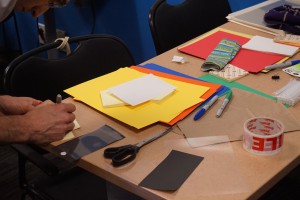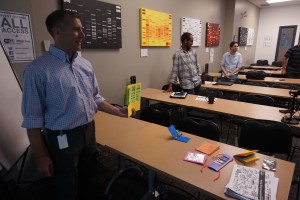Ask Ron Gagnier about what makes design important; the first thing he’ll point you towards is Google. Not to study the layout, but to point out the definition of design:
noun: a plan or drawing produced to show the look and function or workings of a building, garment, or other object before it is built or made
verb: decide upon the look and functioning of (a building, garment, or other object), typically by making a detailed drawing of it.
When asked about these explanations, Gagnier says two key words stand out, “By these definitions every technology company engages in design either knowingly or unknowingly by deciding the look and function of their product”. For over two decades, Gagnier has immersed himself in the world of design. Throughout his career, he’s worked in product design with Nortel, Halogen, Maskery (now Macadamian and most recently IBM. Now Gagnier has launched his own consulting firm to help brands understand why good design breeds great technology and how it helps the bottom line.
Recently Gagnier held a workshop at Invest Ottawa, where attendees are thrown into their first design project within minutes (design the perfect wallet). Beyond pens and paper, Ron’s students use construction paper, pipe cleaners, duct tape or anything else that helps them create a working prototype that solves their clients needs. It’s a testament to Gagnier’s belief that design is a process of discovery through action, failure and refinement. After his most recent workshop, he spoke with IO about some of the misconceptions about design and the “Design Sprint”:
Why is design important for a technology company?
Since look and function are the gauges by which a product is judged, I expect companies to lead with design that is both intentional and strategic. However, in my experience, this is not always the case. Often it is ignorance about the process of design that prevents the creation of exceptional products. Some companies get it understand design and recognize how to use it to their advantage.
What is a common misconception about design?
Often companies think design is strictly about aesthetics or simply the look of the product. While aesthetics play an important role in design, the quality craftsmanship, features and value of the product play equally important roles. The short-sighted view that design is merely aesthetics gets designers involved too late and only at a tactical level. Using design early to understand user needs, explore functional concepts and evaluate ideas can have great strategic impact.
 I think these misconceptions stem from the commoditization of graphic design, interaction design and user research. I would be happy to see the term “user experience” go away as it is a distraction for what product design ultimately provides which is effective product strategy, direction and planning. These days I see what I offer as a designer as being much more beneficial to product management.
I think these misconceptions stem from the commoditization of graphic design, interaction design and user research. I would be happy to see the term “user experience” go away as it is a distraction for what product design ultimately provides which is effective product strategy, direction and planning. These days I see what I offer as a designer as being much more beneficial to product management.
What is a “Design Sprint”?
They are a framework for teams of any size to solve and test design problems in a few days. The key benefit of a sprint is speed. During a design sprint a problem is tackled in a structured way that short-cuts much of the debate and opinion wars that are often rampant when defining a product. Opinion wars tend to drag on and drain a team of their creative energy. Sprints allow a team to deliver much more in less time.
The right team, the right environment and the right facilitator make a big difference. A hand picked team of diverse, creative people in a dedicated space who understand the problem and are willing to follow a process make things go smoother. An experienced facilitator will act as both coach and referee to keep the process moving. The best facilitators have a bag of tricks that re-frame problems in unique ways that allow teams to shift their mindset and think more creatively.
To summarize the steps:
Unpack the problem
What are we trying to achieve? Why?
Who cares about the problem? Why do they care?
Ideate
Capture as many ideas as possible to solve the problem.
Present each idea and ask questions.
Decide
Use voting techniques to decide which ideas best solve the problem. Why?
Prototype
Craft a prototype using whatever quick and dirty techniques will best illustrate the solution.
Evaluate
Get the prototype in front of users, stakeholders or people off the street!
Debrief the sprint and decide on the next steps.
Startups in Invest Ottawa incubator program have access to Ron’s next design workshop on Oct 8th.
Want to join our incubator program? Get more info here







